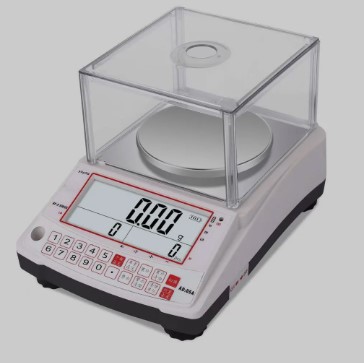Ohaus moisture balances are precision instruments widely used in laboratories for determining the moisture content of various materials. Proper maintenance and calibration of these balances are essential to ensure their accuracy and longevity. This guide provides a step-by-step approach to maintaining and calibrating Ohaus Moisture Balances DSCbalances.com, ensuring optimal performance and reliable results.
Introduction to Ohaus Moisture Balances
Ohaus moisture balances are designed to measure the moisture content in samples by heating them and measuring the weight loss. The accuracy and reliability of these measurements depend on regular maintenance and proper calibration. Neglecting these aspects can lead to erroneous results and potentially compromise the integrity of your work.
Importance of Maintenance and Calibration
Regular maintenance and calibration of moisture balances are crucial for several reasons:
- Accuracy: Ensures precise and reliable measurements.
- Longevity: Prolongs the lifespan of the equipment.
- Compliance: Meets regulatory and quality standards.
- Efficiency: Reduces downtime and improves workflow efficiency.
Step-by-Step Maintenance Guide
1. Daily Cleaning
Materials Needed:
- Soft, lint-free cloth
- Mild detergent
- Soft brush
Steps:
- Turn Off the Balance: Ensure the balance is turned off and unplugged from the power source.
- Remove the Pan and Pan Support: Carefully remove the weighing pan and pan support.
- Clean the Pan and Pan Support: Use a soft cloth and mild detergent to clean the pan and pan support. Rinse with water and dry thoroughly.
- Clean the Chamber: Use a soft brush to remove any debris from the weighing chamber. Wipe with a soft, damp cloth if necessary.
- Check for Residue: Inspect the balance for any remaining residue or foreign objects. Remove them carefully.
2. Weekly Maintenance
Materials Needed:
- Calibration weights
- Soft brush
- Isopropyl alcohol
Steps:
- Perform Daily Cleaning: Follow the daily cleaning steps.
- Inspect the Balance: Check for any visible signs of wear or damage.
- Clean the Internal Components: Use a soft brush to clean the internal components, such as the weighing mechanism and sensors.
- Wipe External Surfaces: Wipe the external surfaces with a cloth dampened with isopropyl alcohol.
3. Monthly Maintenance
Materials Needed:
- Calibration weights
- Manufacturer’s manual
Steps:
- Perform Weekly Maintenance: Follow the weekly maintenance steps.
- Check the Leveling: Ensure the balance is level using the built-in leveling bubble.
- Inspect Cables and Connections: Check all cables and connections for signs of wear or damage. Replace if necessary.
- Run a Diagnostic Test: Refer to the manufacturer’s manual to run a diagnostic test on the balance.
Step-by-Step Calibration Guide
Calibration ensures that your moisture balance provides accurate and reliable measurements. Here’s how to calibrate an Ohaus Moisture Balances DSCbalances.com:
1. Prepare for Calibration
Materials Needed:
- Calibration weights (traceable to NIST standards)
- Manufacturer’s manual
Steps:
- Warm Up the Balance: Turn on the balance and allow it to warm up for at least 30 minutes.
- Stabilize the Environment: Ensure the balance is in a stable environment, free from drafts and vibrations.
2. Perform Internal Calibration
Most Ohaus moisture balances have an internal calibration feature.
Steps:
- Access Calibration Mode: Refer to the manufacturer’s manual to access the internal calibration mode.
- Follow On-Screen Instructions: Follow the on-screen instructions to complete the internal calibration process.
3. Perform External Calibration
External calibration is necessary for verifying the accuracy of the internal calibration.
Steps:
- Access Calibration Mode: Access the external calibration mode as per the manufacturer’s manual.
- Place Calibration Weights: Place the appropriate calibration weights on the balance as instructed.
- Verify Results: Ensure the displayed weight matches the known weight of the calibration weights.
4. Document Calibration
Steps:
- Record Calibration Data: Document the calibration data, including the date, time, and results of the calibration.
- Maintain Calibration Records: Keep a log of all calibration activities for quality control and auditing purposes.
Troubleshooting Common Issues
- Inaccurate Readings: Check for proper leveling, clean the balance, and ensure correct calibration.
- Error Messages: Refer to the manufacturer’s manual for troubleshooting steps related to specific error messages.
- Unstable Measurements: Ensure a stable environment and check for drafts or vibrations.
Conclusion
Maintaining and calibrating Ohau’s moisture balances is essential for accurate and reliable measurements. Regular cleaning, inspection, and calibration ensure the longevity and performance of your equipment. By following this step-by-step guide, you can ensure your moisture balances remain in optimal condition, providing precise and dependable results for your laboratory needs.
Investing time in proper maintenance and calibration not only enhances the accuracy of your measurements but also contributes to the overall efficiency and compliance of your laboratory operations. Regular upkeep of your Ohaus moisture balances is a small yet significant step towards achieving excellence in your work.

